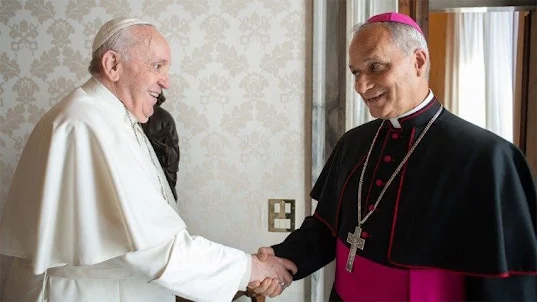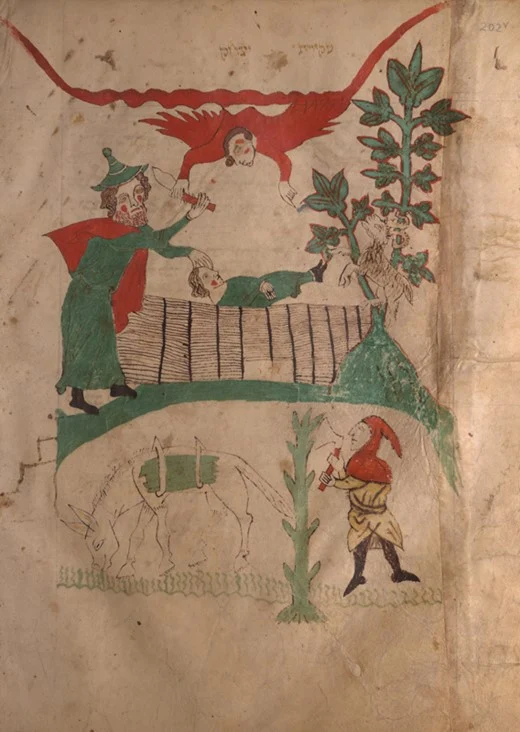The Pope Effect
The fact that Pope Francis, elected
in 2013, is a member of the Jesuit order, and now, with the election of Pope
Leo XIV (formerly Cardinal Prevost), who led the Augustinian Order from 2001 to
2013, raises a compelling question: Is it just a coincidence that these two popes
emerged from different but ideologically aligned traditions rooted in
intellectual discipline and service-centred spirituality? Or is this a
deliberate and strategic shift, the Church's conscious response to a changing
world? Perhaps it's no coincidence at all; perhaps it's providence, a
reflection of the Church's evolving identity one that seeks not only to exist
through rituals and dogma but to thrive through thought, simplicity,
solidarity with the poor, bold steps on issues like homosexuality, clear
opposition to war, and empathy for migrants.
One of Pope Francis's first acts as Pope was his visit to Lampedusa, the Italian island heavily burdened with incoming refugees, to draw attention to their suffering. But here, we must ask:
What changed?
What compelled the Church to move in this direction?
 |
| https://www.vaticannews.va/es/papa/news/2025-05/la-ultima-entrevista-del-cardenal-prevost-sobre-francisco.html |
At this
point, we should remember the resignation of Pope Benedict XVI (Joseph Ratzinger)
in 2013. This move, almost unheard of in modern times, was more than just a
matter of old age. It was a quiet admission of a crisis within the Church.
Benedict’s time as pope was marked by a series of major scandals:
The sexual abuse cases, money laundering allegations linked to the Vatican
Bank, and the Vatileaks documents that exposed internal secrets and
power struggles. These dark revelations, taking place in what should have been
the Church’s most sacred spaces, left wounds, both in public opinion and in the
hearts of the faithful.
Though Benedict XVI was seen as one of the greatest intellectuals in the Catholic world, he lacked strong public speaking skills and struggled to connect with people. That gap was filled by Cardinal Tarcisio Bertone. He was the one speaking to the media in the Pope’s place, deflecting tough questions, managing the public image, and navigating the hidden corridors of Vatican power. A clever and calculating diplomat, Bertone knew how to manage the narrative when scandals erupted.
Bertone was not just a “secretary” in the Vatican—he was an architect. Behind the scenes, he built a network: a structure, a circle of loyalty, and influence. Everyone could see the complex games of power unfolding around the Pope, but no one seemed able to stop them. And perhaps Benedict saw this too. He realized that he no longer had the strength or the allies to carry out reform. As long as Bertone’s inner circle remained intact, the Church could not truly breathe again.
So there
was only one move left:
To step down.
.jpeg) |
| https://www.vaticannews.va/en/pope/news/2022-11/pope-francis-general-audience-wednesday-catechesis-16-november.html |
“The
duty of the Conclave was to give Rome a bishop. It seems that my brother
Cardinals have gone to the ends of the earth to get one.”
—
Jorge Mario Bergoglio (Pope Francis), 13 March 2013
That day, under the domes of the Sistine Chapel, the
cardinals gathered to do what they had always done: elect an archbishop for
Rome. But this time, the one they chose did not come from Rome. He came from
the margins.
As he himself put it : “from the end of the world.”
When
Jorge Mario Bergoglio was elected pope in 2013, he chose a name no pope before
him had ever taken: Francis. This was not a random decision; it carried
a deep symbolic meaning, a message in itself. Bergoglio chose the name of Saint Francis of Assisi, the man who
renounced wealth and privilege, who preached peace, and lived among the poor.
But the true meaning behind this name lies in a story from Francis's own life.
According
to tradition, one day while praying in the ruins of the San Damiano chapel,
Saint Francis heard the voice of God say: "Francis, go and rebuild my Church,
which, as you see, is falling into ruin."
At first, Francis took these words literally. He began to repair the crumbling chapel with stones and mortar. But over time, he came to understand: God was not speaking of walls and buildings. What truly needed rebuilding was the Church’s spiritual and moral foundation. What had collapsed was not the structure, but faith, conscience, and essence. Pope Francis understood this, too. By choosing the name "Francis," he was not merely honouring a saint; he was embracing the mission the saint had left behind. In taking on this name, he accepted the bold and heavy responsibility of helping to restore a Church wounded by scandal, distanced from the people, and disconnected from the poor. But he sought to do this not with bricks, but with compassion; not from the grandeur of palaces, but by living in a modest guesthouse; not by speaking from the heights of hierarchy, but by standing beside the people themselves.
.jpeg) |
| https://www.vaticannews.va/en/pope/news/2025-05/biography-of-robert-francis-prevost-pope-leo-xiv.html |
The newly elected Pope Leo XIV now
faces an important choice: will he continue in the footsteps of Pope Francis,
or will he draw his own path forward? One thing is certain: today’s
Christianity, with some exceptions, faces the danger of reducing faith to a set
of repeated rituals, while overlooking metaphysics: the deep, invisible, and
meaning-filled layers of existence. In churches, incense continues to rise,
prayers are whispered softly, and hands are joined in reverence, but often, the
mind is empty, and the spirit is elsewhere.
Pope
Francis adopted a language that touched the wounds of the world. Pope Leo XIV,
in turn, may become a leader who brings back Saint Augustine’s philosophy of
“communal spirit” to the global conversation. And this leads us to an essential
question:
Is the Church now searching for God
not only in the heavens, but also in the eyes of a poor child and in the quiet
hope of a refugee?
See you in Part II



.jpg)


%20(1).jpg)